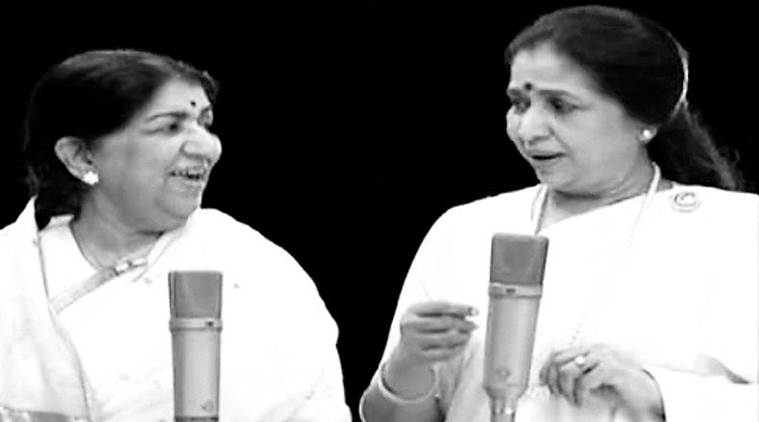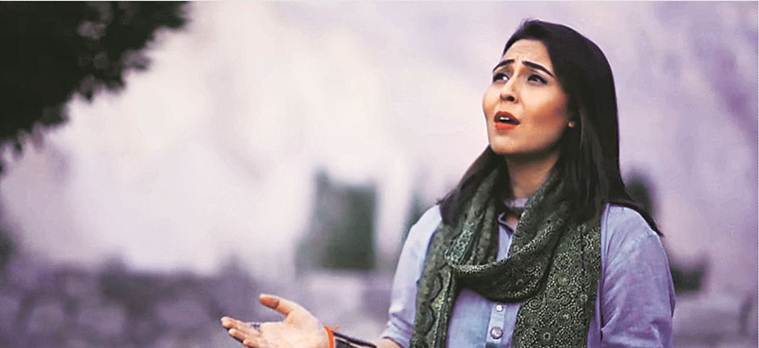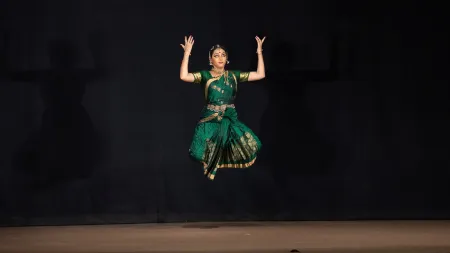- India
- International
One People, One Song
A look at the many versions of a piece of poetry so indelibly bound to India's identity.
 Lata Mangeshkar and Asha Bhosle in a still from Rahman’s version of the national anthem. (File)
Lata Mangeshkar and Asha Bhosle in a still from Rahman’s version of the national anthem. (File)
In 1911, when Nobel Laureate Rabindranath Tagore penned Jana gana mana, a set of verses in highly Sanskritised Bengali and almost entirely made up of nouns invoking spiritual sovereignty, not many knew that the poem would find its way so fluidly into the Indian consciousness to become so indelibly bound to the Indian identity. The first person to give it a tune was Dinendranath Tagore. Irish-Indian educationist Margaret Cousins of the Besant Theosophical College is credited with a composition after Tagore visited Madanapalle.
The present tune as we know it, the shortened martial style rendition of the piece which takes 52 seconds, is based on a tune composed by Captain Ram Singh Thakuri, freedom fighter and the band master of the Indian National Army and remembered for the iconic Qadam qadam badhaye ja. It may be nothing like the popular video of Tagore reciting it on moving camera, but it has come to mean India in many ways.
Many controversies have erupted when new-age versions have exceeded the official time. The most prominent being the one where actor Amitabh Bachchan sang a live version before the India-Pakistan T20 World Cup at Eden Gardens last year. A complaint was filed against Bachchan in Delhi for singing the piece for one minute and twenty-two seconds. But what wasn’t understood by Ulhas PR, who filed the complaint, was that 52 seconds is the time it takes to complete the rhythm cycle for Tagore’s piece to be sung. It’s a mathematical rhythm concept and nothing to do with disrespect. Over the years there has been a slew of national anthems that exceeded 52 seconds and have been some of the finest specimens of the national anthem.
AR Rahman’s national anthems
Over the years, Rahman has given us two renditions of the national anthem, both of which have been produced by Bharat Bala. They were commissioned by the Culture Ministry under the Atal Bihari Vajpayee government. Created in 2006, one is an instrumental rendition, while the other is a vocal presentation. Rahman tried to capture the nation’s endless musical variety in these three-minute pieces. In the latter, he managed to put melody queen Lata Mangeshkar and sister and singer Asha Bhosle, in one frame, singing together.
The visuals segue into a grinning M Balamuralikrishna, Hariharan, Kavita Krishnamurthy, a somber Pt Bhimsen Joshi, a smiling DK Pattammal, Jagjit Singh, Pt Jasraj, Bhupen Hazarika and Rajasthani folk artiste Sadiq Khan Langa. Rahman melded vocalists from various genres, styles, gharanas and presented a rousing version with synth and brushed drums, showcasing India’s most famous vocalists in gentle shades of patriotism, where a tricolour on Mangeshkar’s neck as a necklace is the only colour in a black-and-white video and enough to show us a streak of patriotism.

It crosses the typical 52-second mark because the composition is rendered slowly, and with many modifications to the original one. It’s stirring and a rare sanctuary of patriotism without the set martial tone we are used to. The second piece, which has the various instruments of India singing to the age-old tune, opens with violin, trumpet, and cellos heaving to a female voice singing Jaya hey at short intervals while a flag goes up on the pole.
Pt Hari Prasad Chaurasia breathes life into the bamboo reed as he opens Jana gana mana, broadly based on raga Yaman Kalyan. Amaan Ali Khan and Ayaan Ali Khan (sarod), Vikku Vinayakram (ghatam), synth (Rahman) play the vigorous parts, while mohan veena’s faint yet hearty riffs by Pt Vishwa Mohan Bhatt playing Jaya hey leave you moved.
 Ustad Zakir Hussain in Shrotri’s version. (File)
Ustad Zakir Hussain in Shrotri’s version. (File)
Pushkar Sudhakar Shrotri’s national anthem
A one-minute and eight-second instrumental version created by Marathi stage actor and director Pushkar Sudhakar Shrotri and produced by Ameya Vindo Khopekar, President of Maharashtra Navnirman Chitrapat Karamchari Sena, also found much popularity when it came out in 2015. Shrotri had already done one version before — with 75 Marathi artistes coming together.
In this, he took 12 musical maestros from their respective fields, Hindustani and Carnatic, and created the presentation. This one opens with the single drone of the tanpura merging into the opening on flute by Chaurasia, and goes into the soft riffs of the santoor by Pt Shiv Kumar Sharma.
The feminine notes of the sitar by Ut Shahid Parvez Khan come together with the masculine notes of the sarod by Ut Amjad Ali Khan. Carnatic instruments like the veena, violin and ghatam played by Pt A Ananthapadmanabhan, N Rajam and Vikku Vinayakram respectively fuse with sarangi and tabla without contention. Ut Zakir Hussain uses four differently toned daanyas (the right drum in a tabla set) to create melody entirely through drums, a rhythm-centric instrument. The earnestness of this version comes through almost immediately and leaves one coloured in one of the finest musical compositions India has delivered.
 Natasha Baig in the Indo Pak version. (File)
Natasha Baig in the Indo Pak version. (File)
The Indo-Pak mash-up
This one combines Ahmad G Chagla’s composition of Pak sarzameen, the Pakistani national anthem with Tagore’s version. Young musicians from both sides of the border sing the two anthems, giving out their eventual message, “When we open our borders to art, peace comes along”. The medley went viral on social media last year.
Advertising & National Anthem
When Shubha Mudgal’s voice comes on a portable radio in the street, a cobbler who doesn’t have a leg gets up with the help of his crutches and stands straight in the rain, saluting the national anthem. Everyone else is seen running for shelter. The ad was presented by Ambience Publicis and found much attention after it was shown before film screenings in Mumbai theatres. But what caught the fancy of even the international audience was the silent national anthem where 500 students with hearing and speech disabilities stand together in a school assembly and sing the national anthem in sign language. Presented by Big Cinemas, and directed by Bobby Pawar at Mudra, the advertisement was exemplary in celebrating diversity. In 2011, it won a silver at advertising’s highest awards — Cannes Lion.
More Lifestyle
Apr 18: Latest News
- 01
- 02
- 03
- 04
- 05


































